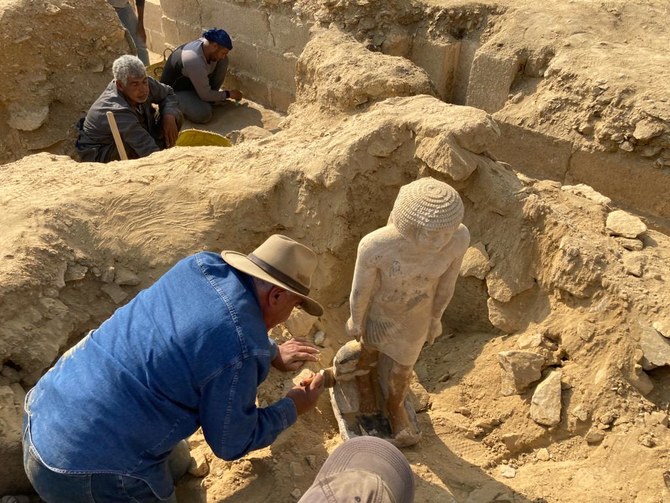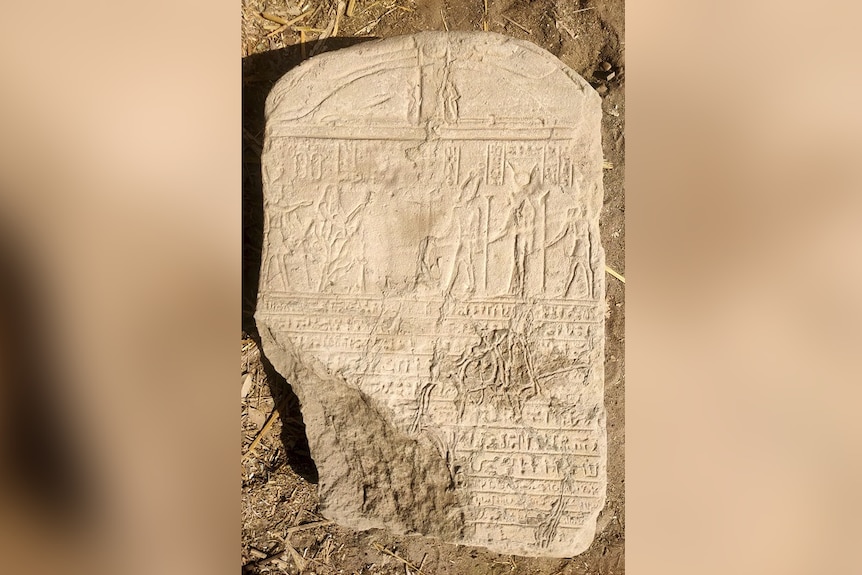
The statue is believed to have been made in the likeness of Roman emperor Claudius.(Egyptian Ministry of Tourism and Antiquities via AP)
Archaeologists have unearthed a sphinx-like statue and the remains of a shrine in an ancient temple in southern Egypt.

The artefacts were found in the temple of Dendera in Qena Province, 450 kilometres south of the capital of Cairo, Egypt’s Antiquities Ministry said in a statement on Monday.
Archaeologists believe the statue’s smiling features may belong to the Roman emperor Claudius, who extended Rome’s rule into North Africa between AD 41 and 54, the ministry said.
Archaeologists are set to conduct more studies on the markings on the stone slab, which could reveal more information on the statue and the area.
The statue is much smaller than the towering, well-known sphinx in the Pyramids of Giza complex, which is 20 metres high.
The archaeologists also found a Roman-era stone slab covered in hieroglyphics and demotic writing, the ancient Egyptian script.

A tablet covered in demotic and hieroglyphic inscriptions was also discovered at the location.(Egyptian Ministry of Tourism and Antiquities via AP)
The limestone shrine includes a two-layer platform and a mud-brick basin from the Byzantine era, the ministry said.
Such discoveries are usually touted by the Egyptian government in hopes of attracting more tourists, a significant source of foreign currency for the cash-strapped North African country.

